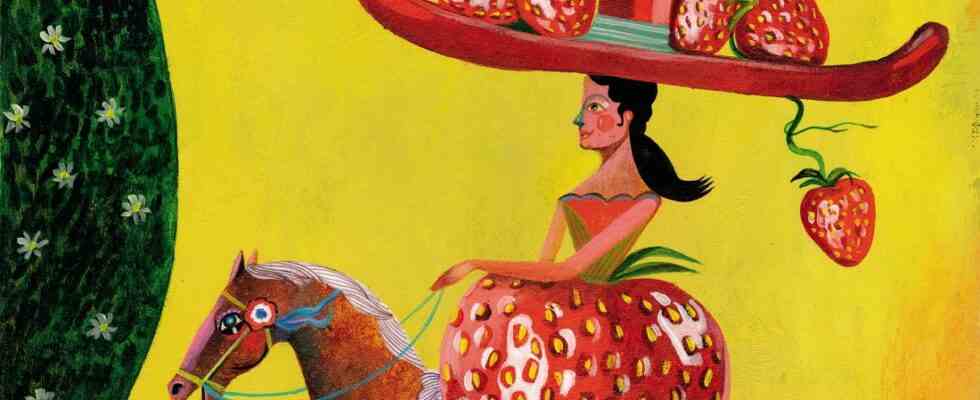How can a book inspire interest in things that, in their diversity, are primarily experienced with the sense of taste? The author Annette Roeder has experience in this field. In her last book she presented types of vegetables. And the draftsman Olaf Hajek has colored in brightly colored pictures whatever came to mind for spinach, tomatoes, cabbage or turnips. This time it’s about fruit, about fruit and berries, about local products such as apples, raspberries, cherries or grapes, but also about fruits that only grow in distant countries but can be bought here almost all year round, such as bananas, mangoes, kiwi or pineapple.
For the illustrator Hajek, who likes to spin natural motifs into baroque-fantasy with bold colors in his pictures, fruits were almost more of a design challenge than vegetables. Because fruits, no matter how small they may be, present themselves so powerfully in one of the three primary colors red, yellow or blue when they are ripe that a draftsman who is supposed to bring them to life in a book has to use additional colors almost had to hold back. So Hajek let his narrative imagination run wild. In his fig tree, three little birds make merry music; her breast is almost as red as the inside of the fig that lies cut open next to it. On another page of the book, a bunch of grapes with their blue berries nestles harmoniously around the head of a beautiful young woman like naturally grown curls. And with Hajek, the strawberry can even become the riding skirt of an amazon who carries other strawberries across the country on her expansive hat.
Our plants have developed flowers and fruits to scatter seeds into the world
For the author Annette Roeder, the task of presenting fruit in all its diversity was completely different. She hardly had to worry about the external characteristics, the striking color variants and the extreme size differences – a thousand blueberries weigh significantly less than a single fat watermelon. She was able to concentrate on something that is not only exciting for young readers, but was also new and surprising for the experienced author of these lines: the scientific findings on fruit. Our plants have developed flowers and fruits to scatter seeds into the world. But the seeds, which are supposed to ensure offspring, are attached to a different place in almost every type of fruit: in the case of the peach, they are hidden deep inside the hard stone, in the case of the apple, as seeds, they are loosely distributed in the five chambers of the inner shell. With strawberries, the seeds sit as tiny little nuts on the outside of the skin; in the case of the banana, however, they are hardly noticeable in the soft flesh of the fruit. Differences that we have hardly noticed so far, but which we will notice when enjoying in the future.
Annette Roeder: Olaf Hajek’s fantastic fruits. Prestel 2022. 39 pages, 22 euros.

